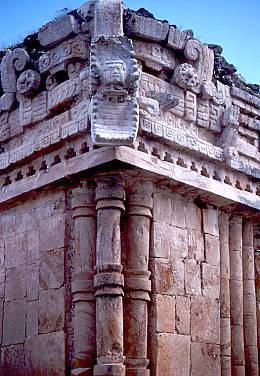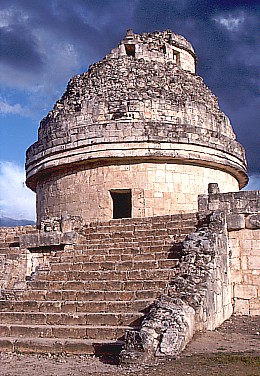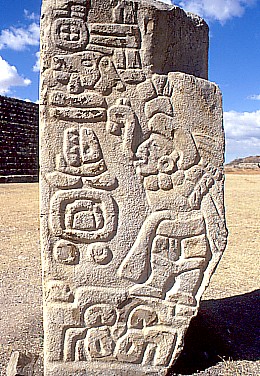Nature's Manufacturer of the "Food of the Gods!"
Roots in the Past

The cacao tree has been satisfying the human desire for chocolate for thousands of years, dating back to the Mayan civilization. In fact, many scientists suggest that the history of chocolate goes even farther back, to the Olmec civilization. The Olmec lived in Mexico between 1500 and 500 B.C., right before the Mayans dominated the region. According to a Yale professor of anthropology Michael Coe, "cacao" is not even natively Mayan, but an Olmec word. One thing is certain, chocolate was popular long before there were candy bars and hot chocolate. [The photo below (far left) shows a Mayan building with a stone face of Quetzalcoatl, the god they believed brought them chocolate!]
The Aztecs, who flourished along with the Maya, also used the cacao tree for chocolate. The famous (or infamous) explorer Hernán Cortés is reported to have brought cacao and the chocolate making process back to Spain after taking over the Aztecs. (To learn about the chocolate making process visit the Chocolate Page.) It is believed that Christopher Columbus actually brought cacao to the Spanish first, but he had no knowledge of what it was used for, so it was largely forgotten. When the Spanish realized the value of this newfound crop, they began expanding the growth of cacao and exporting it for trade. The beans were so valuable they were used as currency for centuries. It wasn't long before chocolate had spread all over the world and millions were bewitched by its tantalizing aroma and flavor.
Copyright © 2007, Design by: Sunlight webdesign


